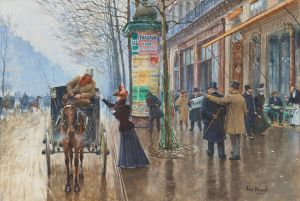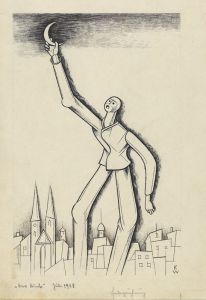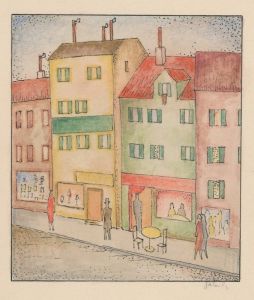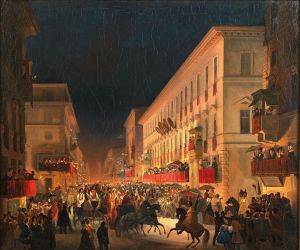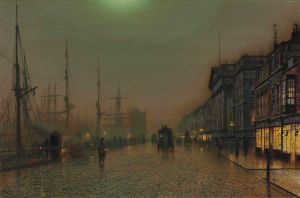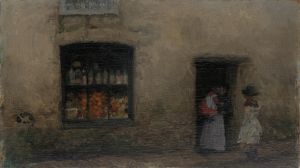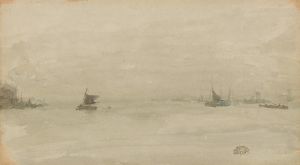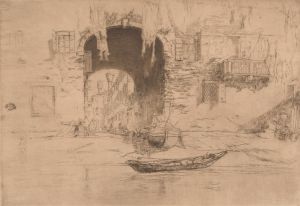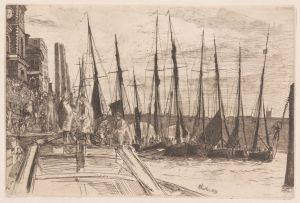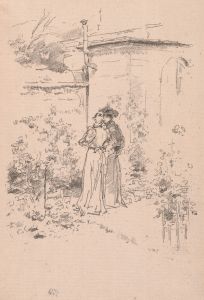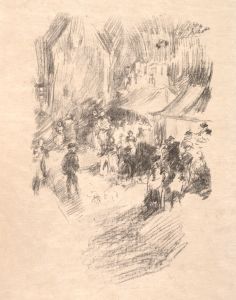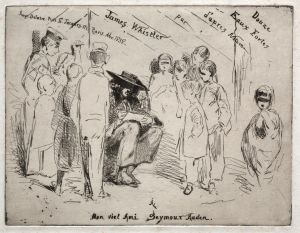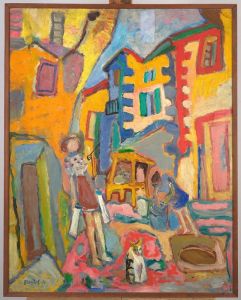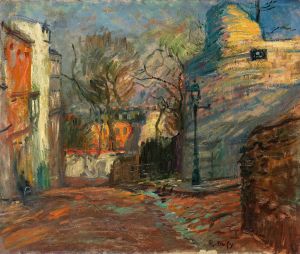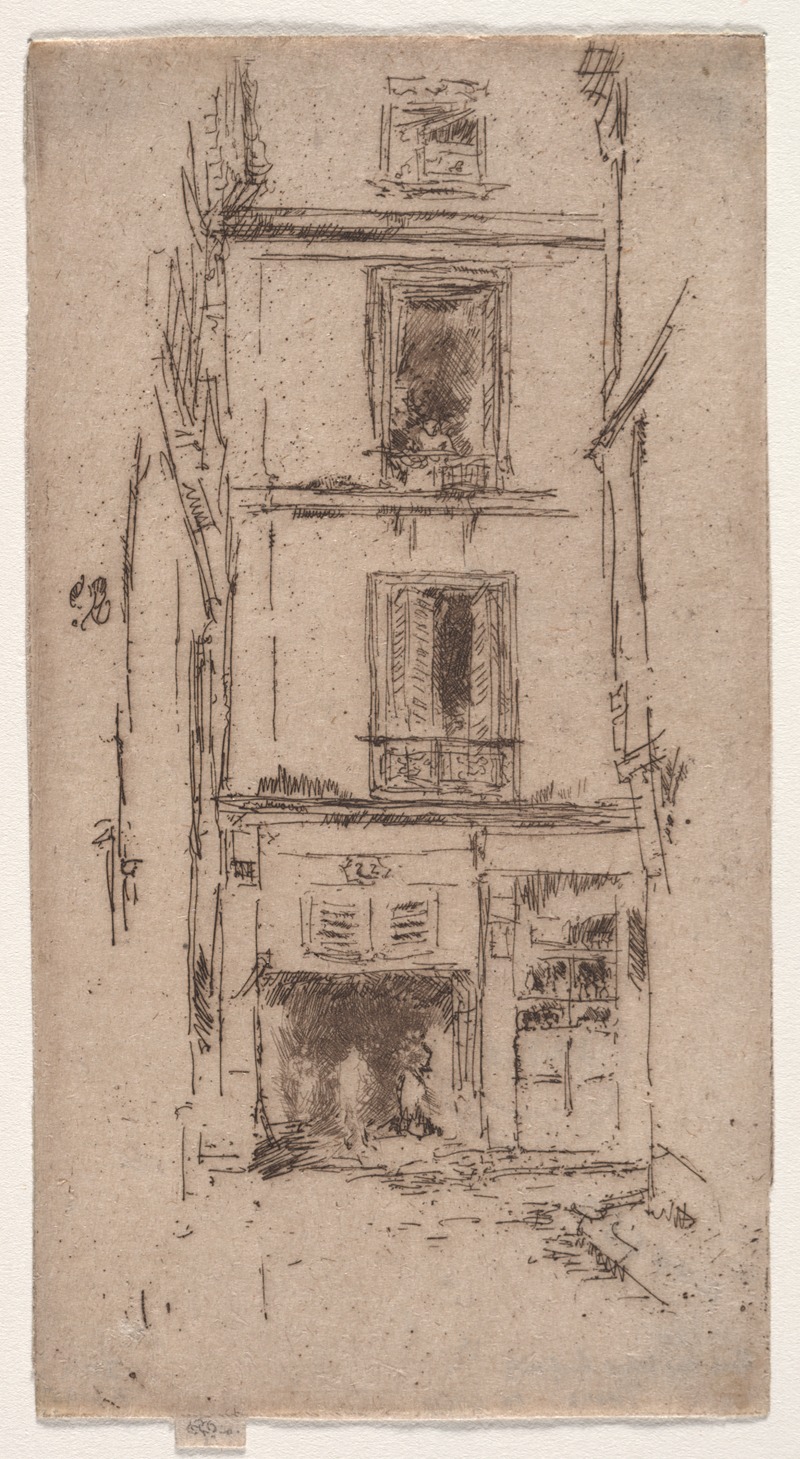
Rue des Bons Enfants, Tours
A hand-painted replica of James Abbott McNeill Whistler’s masterpiece Rue des Bons Enfants, Tours, meticulously crafted by professional artists to capture the true essence of the original. Each piece is created with museum-quality canvas and rare mineral pigments, carefully painted by experienced artists with delicate brushstrokes and rich, layered colors to perfectly recreate the texture of the original artwork. Unlike machine-printed reproductions, this hand-painted version brings the painting to life, infused with the artist’s emotions and skill in every stroke. Whether for personal collection or home decoration, it instantly elevates the artistic atmosphere of any space.
James Abbott McNeill Whistler was an American artist known for his distinctive style and significant contributions to the art world during the late 19th century. Among his many works, "Rue des Bons Enfants, Tours" is one of his lesser-known pieces, yet it reflects his unique approach to capturing the essence of a scene through his art.
Whistler was born in Lowell, Massachusetts, in 1834, but he spent much of his life in Europe, where he developed his artistic career. He was heavily influenced by the Aesthetic Movement, which emphasized the importance of beauty and art for art's sake, rather than conveying moral or social messages. Whistler's work often focused on the harmony of color and composition, and he was known for his innovative use of tone and subtle gradations.
"Rue des Bons Enfants, Tours" is a painting that showcases Whistler's interest in capturing the atmosphere and mood of a place. The painting depicts a street scene in Tours, a city in central France known for its rich history and beautiful architecture. Whistler's choice of subject reflects his fascination with the everyday life and urban landscapes of Europe, which he often explored in his work.
In this painting, Whistler employs a muted color palette, a characteristic feature of his style, to create a sense of tranquility and timelessness. The composition is carefully balanced, with an emphasis on the interplay of light and shadow, which adds depth and dimension to the scene. Whistler's brushwork is delicate and precise, capturing the intricate details of the architecture and the subtle nuances of the street's atmosphere.
Whistler's approach to "Rue des Bons Enfants, Tours" aligns with his broader artistic philosophy, which sought to evoke emotion and mood rather than depict a literal representation of reality. His work often drew comparisons to music, with critics noting the lyrical quality of his compositions. This painting, like many of his others, can be seen as a visual symphony, where each element contributes to the overall harmony of the piece.
Throughout his career, Whistler was known for his innovative techniques and his ability to blend elements of different artistic traditions. He was influenced by the works of the French Impressionists, as well as Japanese art, which was gaining popularity in Europe at the time. These influences can be seen in his use of color, composition, and his focus on capturing fleeting moments.
"Rue des Bons Enfants, Tours" is a testament to Whistler's skill as an artist and his ability to convey the essence of a place through his work. While it may not be as famous as some of his other pieces, such as "Arrangement in Grey and Black No. 1" (commonly known as "Whistler's Mother"), it remains an important part of his oeuvre, illustrating his mastery of capturing the subtle beauty of everyday scenes.
In summary, James Abbott McNeill Whistler's "Rue des Bons Enfants, Tours" is a fine example of his artistic style and philosophy. Through his careful composition, muted color palette, and attention to detail, Whistler creates a painting that is both evocative and harmonious, reflecting his belief in the power of art to transcend the mundane and capture the beauty of the world around us.





